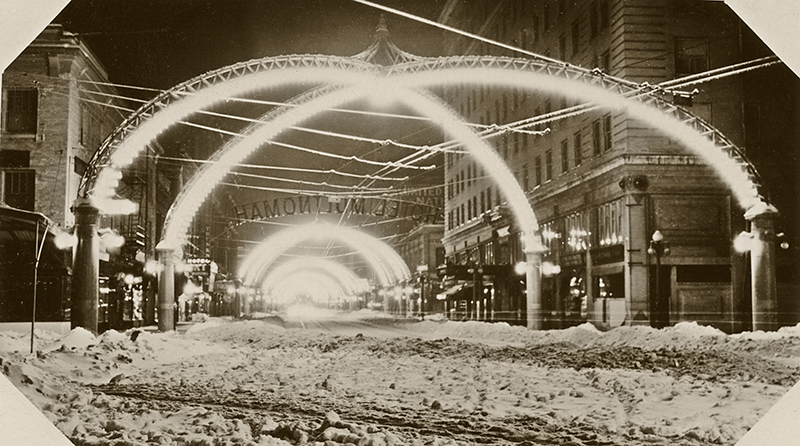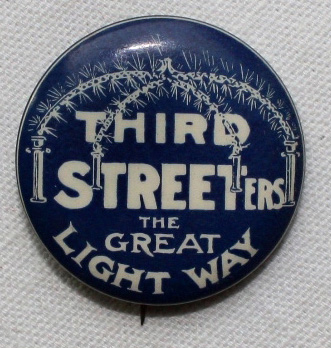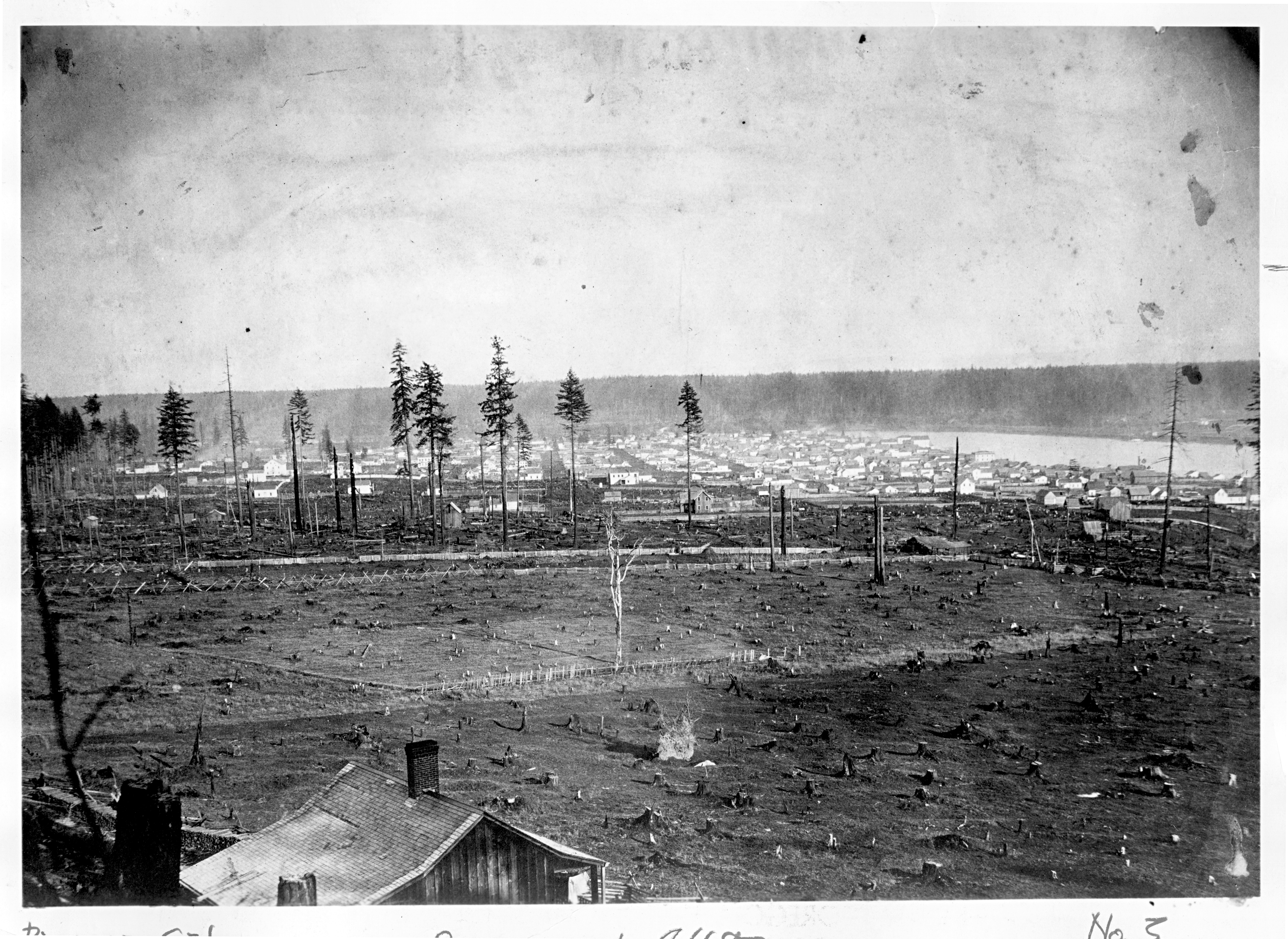Portland’s Third Street reinvented itself as The Great Light Way in June 1914 by installing a series of arcaded lights over each intersection from Yamhill to Burnside streets.
Third Street merchants were concerned that the commercial center of town was drifting to the west, away from the Willamette River. The Broadway Bridge had opened the year before, routing a new stream of traffic from the east side directly onto Seventh Street, which was renamed Broadway in the hopes of establishing a new downtown theater district. Third Street boosters, who feared becoming part of the rundown “wholesale district” along the river, felt they needed a counterweight to retain retail and entertainment activity.
The arched lighting structures consisted of four concrete-incased Doric columns, one on each corner, linked by a pair of eighty-two-foot-long, two-and-a-half-ton steel arches that met over the intersection. Each arch contained ninety-six 40-watt bulbs, topped by a 750-watt nitrogen lamp. Pendant lamps hung from the columns’ capitals. Power was provided by the Northwestern Electric Company at a cost of $6,700 a year, which was paid by Third Street merchants. The initial ten arches were constructed between Yamhill and Burnside. A year later, in June 1915, five additional arches were built from Couch to Glisan streets. A planned extension from Taylor to Market never came to be.
The arches were lit with great fanfare at eight o’clock on the evening of June 6, 1914. There was a parade and entertainment the length of Third Street, including ragtime music provided by Campbell’s American band and Brown’s band. The celebration capped a promotional campaign that included full-page newspaper advertisements, storefront improvements, and the distribution of thousands of “Third Streeter” buttons.
The event was viewed as a tremendous success. Hopes ran high for the rejuvenation of Third Street and a rumored plan to build a 2,000-seat motion picture theater. The merchants formally organized into The Third Streeters of the Great Light Way to build on the momentum.
The arches were an attraction into the 1920s, and provided inspiration for less elaborate lighting districts on Broadway and on Washington and Grand. While the downtown retail core remained to the west, many believed that the Great Light Way allowed Third Street to hold its own. While the 2,000-seat theater never appeared, the choice to build the Municipal Auditorium on Third Street in 1917 was attributed to the efforts of the Third Streeters.
The series of arches remained intact until 1925 when street-widening projects, related to a new Burnside Bridge, necessitated the removal of the arches over Burnside and Glisan streets. A further widening project in 1928 led to the removal of the arches over Ankeny and Ash streets. The power was turned off on the remaining arches in 1937, due to the Depression and changes in the terms of Northwestern Electric’s franchise. Demolition began soon afterward. Three arches survived until August 1940, when the city council ordered the removal of the last remnants of the Great Light Way.
-
![Third and Ash Streets, looking south, prior to 1933.]()
Great Light Way, Third and Ash, ca. 1933.
Third and Ash Streets, looking south, prior to 1933. Copyright Dan Haneckow
-
!["Third Streeter" button.]()
Great Light Way, Third Streeters button.
"Third Streeter" button. Copyright Dan Haneckow
Related Entries
Map This on the Oregon History WayFinder
The Oregon History Wayfinder is an interactive map that identifies significant places, people, and events in Oregon history.
Further Reading
"The street that held its own by better lighting." Forbes Magazine, Sept. 1, 1926.
Nelson, Donald R. Progressive Portland II: Stop and Go. Portland, Ore.: D. Nelson Books, 2006.
Sohm, Catherine. A History of Street Lighting in Portland, Oregon. Portland, Ore.: City of Portland Office of Transportation, 1997.



